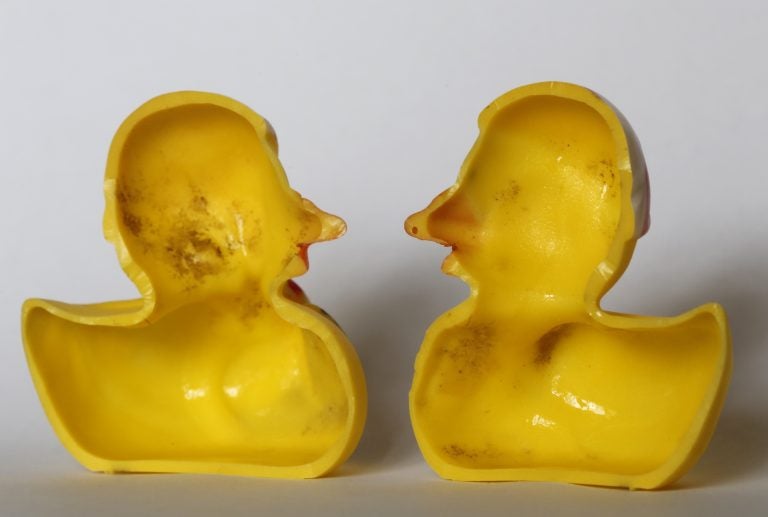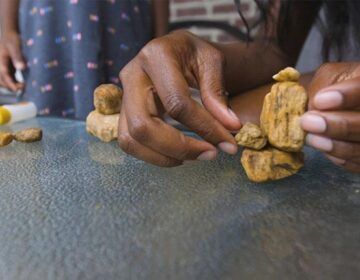Yucky ducky? Study reveals bath-time toy’s dirty secret
Swiss and American researchers counted the microbes swimming inside the toys.

The March 27, 2018 photo shows the inside of a rubber duck after it was cut open for the photo in Nauen, Germany. Swiss researchers now say the cute, yellow bath-time friends harbor a dirty secret: Microbes swimming inside. (Ferdinand Ostrop/AP Photo)
Scientists now have the dirt on the rubber ducky: Those cute yellow bath-time toys are — as some parents have long suspected — a haven for nasty bugs.
Swiss and American researchers counted the microbes swimming inside the toys and say the murky liquid released when ducks were squeezed contained “potentially pathogenic bacteria” in four out of the five toys studied.
The bacteria found included Legionella and Pseudomonas aeruginosa, a bacterium that is “often implicated in hospital-acquired infections.”
The study by the Swiss Federal Institute of Aquatic Science and Technology, ETH Zurich and the University of Illinois was published Tuesday in the journal Biofilms and Microbiomes. It’s billed as one of the first in-depth scientific examinations of its kind.
They turned up a strikingly high volume — up to 75 million cells per square centimeter (0.15 square inch) — and variety of bacteria and fungus in the ducks.
While certain amounts of bacteria can help strengthen kids’ immune systems, they can also lead to eye, ear and intestinal infections, the researchers said.
The scientists, who received funding from the Swiss government as part of broader research into household objects, say using higher-quality polymers to make the ducks could prevent bacterial and fungal growth.
The Swiss government isn’t making any recommendations at this stage.
Known for their squeaks, rubber duckies have been a childhood bath-time staple for years. Online vendor Amazon.com lists one such offering — advertised as water-tight to prevent mildew — among the top 10 sellers in its “Baby Bath Toys” category.
WHYY is your source for fact-based, in-depth journalism and information. As a nonprofit organization, we rely on financial support from readers like you. Please give today.




